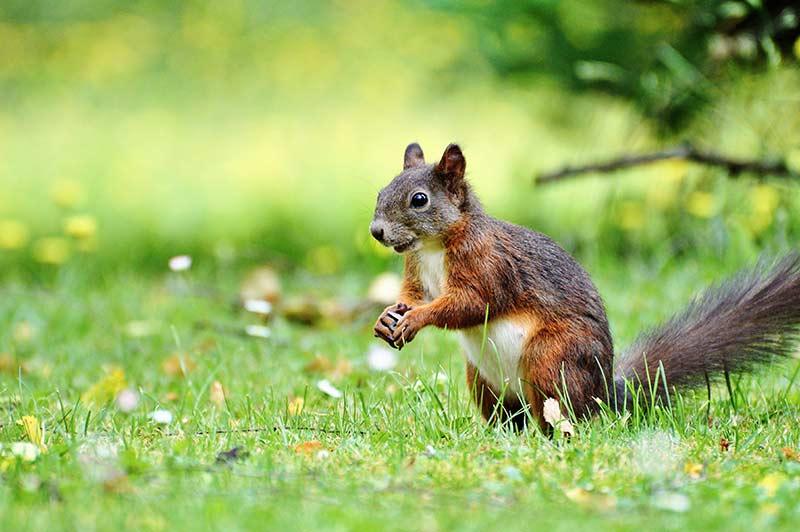5 Ways To Transform Your Garden Into A Wildlife Paradise

Making your yard a safe space for wildlife is not only beneficial to the animals. Creating a wildlife paradise can positively impact the health of your plants, flowers, and any fruits and vegetables you are growing.
In this article, we will discuss tips for creating a wildlife garden that will surely please all your furry and feathered friends. Following these simple guidelines will help you to turn your backyard into a true paradise for wild animals.
The benefits of wildlife
There are many benefits to having wildlife in your garden, including some that you may not have thought about before. These are the key reasons you should encourage wildlife into your garden.
- Pest control - One of the most obvious benefits is that they help to keep your plants healthy by eating pests. This can save you money on pesticides and prevent you from using harmful chemicals to protect your greenery.
- Seed spreading - Wildlife also helps to spread seeds around, which can help to increase the biodiversity in your area.
- Pollination - Many animals, such as bees and butterflies, are important pollinators. This means they help to transfer pollen between flowers, which is essential for plant reproduction.
- Nutrient spreading - Insects and mammals help to add nutrients to your soil. This is because they deposit waste, which breaks down and enriches the earth.
- Ecological balance - All animals play a role in maintaining the delicate balance of their ecosystems. By having wildlife in your yard, you are helping to support this balance and ensuring that nature can thrive.
Animals that you should be inviting into your garden
Some animals cause more damage than good, but others should be on your wildlife Wishlist. If you start seeing the following animals in your outdoor space, you'll know your efforts to create a haven for wildlife have succeeded.
- Pollinators like bees, butterflies, and birds are an essential part of any garden's ecosystem.
- Toads, frogs, and lizards are vital pest control, especially for gardens with a slug problem.
- Ants and beetles can pollinate, and they also naturally turn over the soil as they dig
Some varieties of these animals, like Japanese beetles, can be damaging. If you suspect any of the wildlife in your garden is causing damage, take special precautions to remove them.
How to create a successful wildlife garden
Now you know why introducing wildlife to your garden is so important, we'll arm you with the knowledge that you need to create a successful wildlife garden of your own. you don't have to implement all these changes at once but starting small and making gradual changes will have a much bigger impact than you might think.

1. Choose the right plants
One of the most important things you can do to attract wildlife is to choose the right plants. Make sure you select a variety of native plants, as these will be best suited to your local climate and soil. Planting non-native species can damage your local ecosystem, so make sure you do your research. You should also try to include a mix of trees, shrubs, and perennials to provide food and shelter for a range of animals. Planting wildflowers can also help to increase the biodiversity of your outdoor space.

2. Make your garden accessible
To attract any animals, you need to make sure that your garden is an accessible and welcoming space for them. This means creating easy routes in and out, for example, making small openings in fences or replacing fences with hedgerows that they can find their way through. You will also need to provide habitats for animals to live in. For example, if you want to attract toads, frogs, and lizards, you'd benefit from creating a pond. To attract birds, put up some nesting boxes and feeding stations. Generally, think about what animals might need and provide it for them.

3. Provide food and water
Water is essential for all animals, so try to include a small pond or birdbath in your design. You could even add a water feature like a waterfall or fountain to really make your garden stand out, but you’ll need to be careful of leaving stagnant water which can provide the perfect place for mosquitos to lay their eggs. Ensure water is kept moving to prevent this, and if you are leaving out dishes or bowls of water, change them every day.
You will also need to provide food, or at least the means to get food, for the animals you want to attract. This could be anything from a bird feeder full of seeds to a fruit tree that bears berries in the summer. If you're not sure what to plant, look around your neighbourhood and see what's already attracting wildlife.
4. Provide shelter
As well as food and water, animals also need somewhere to shelter. This could be in the form of a hedge, log pile, or even just some dense foliage. If you have the space, you could even build a small shed or hut that can be used as a home for animals. Again, think about what animals you want to attract and provide the appropriate shelter.

5. Get rid of your lawn
Wildlife thrives when outdoor areas are left to go wild. Manicured and fake lawns do nothing for local animals, when things are too tidy there is nowhere for them to hunt, forage, or hide. They also provide very little drainage, causing rainwater runoff that can push harmful pesticides and chemicals into streams, polluting your local wildlife’s water supply. Try to stop being precious about how your garden looks and get rid of your perfect lawn, or at least leave a corner of your outdoor space to go ‘out of control’. You could also plant a moss lawn. They can put up with drought, and are much more beneficial.